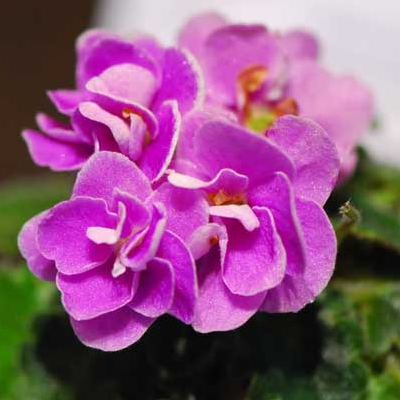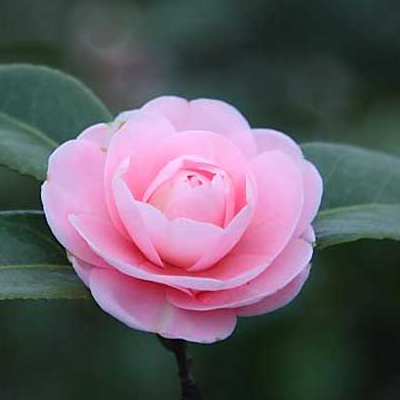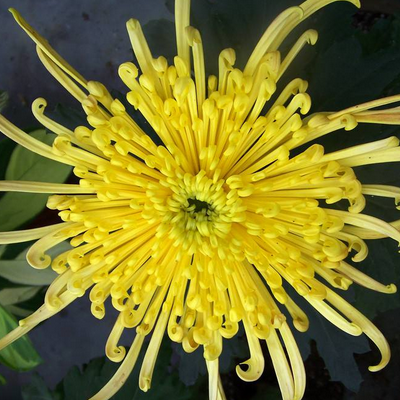How long is the florescence of African violets? why don't they blossom?
African violets are very small mutual flowers, and they are also very suitable for the most ornamental plants, so how long is the florescence of African violets? Why don't African violets bloom?

How long is the florescence of African violets:
When it comes to the flowering time of Corydalis, in fact, cuttings are needed to propagate. The propagation of Corydalis is mainly based on sowing reproduction and cutting propagation, and there are some differences in the time of flowering among different propagation methods.
From the point of view of sowing and reproduction, it takes about 6 months to 8 months from sowing to flowering. If the seeds are sown in February in spring, then the flowering time is usually in August, but it blossoms less and grows poorly at this time. If the African pansy is sown in autumn, it is usually better to sow from September to October, and it can blossom well in the spring of the following year.
Why don't African violets blossom:
1. The influence of light.
The non-flowering of Corydalis may be due to the influence of light. African pansy needs enough light to bloom, and it will be difficult for it to blossom if the light is not enough.
2. Excessive nitrogen fertilizer
In the cultivation of Corydalis, although appropriate nitrogen fertilizer is needed, during the growth period, if too much nitrogen fertilizer is applied, it will lead to luxuriant branches and leaves, but it is difficult to bloom.
All right, this is the end of the introduction about African Violet, friends, you all come to know clearly.
African violets usually bloom in a few months, and how long do African violets bloom / bloom in four seasons
African violets, also known as African violets, are perennial herbs, so they can blossom every year if they are preserved. In life, there are many people who raise African violets because they are very beautiful. They all expect African violets to blossom. When do African violets usually blossom? How long is the florescence of African violets? Next, the editor will answer the questions for you.
1. African violets usually bloom in a few months and are not fixed.
In fact, the answer to this question is not fixed, because it has something to do with its cutting time. It is understood that African violets are usually propagated by cutting, and the flowering time varies according to the cutting time, as follows:
Because it takes 4-6 months from cutting to flowering, if the cuttage is from June to July, it will blossom from October to November, and from September to October, it will blossom from March to April of the following year. If the propagation is not cuttage, but sowing, it is usually sown in February and blossom from August to September.
2. How long is the florescence of African violets, 2 months
According to the editor, no matter when it blossoms, the florescence of African violets is still quite long. If we strictly follow the farming methods of African violets, it can blossom for as long as 2 months, which is enough for everyone to watch carefully! It is worth mentioning that African violets can blossom in four seasons by controlling the temperature.
Third, the flowering method of African violets in four seasons.
Generally speaking, African violets can bloom all year round, but most parts of the country are hot in summer and cool in winter, so it is difficult for African violets to bloom in four seasons. However, human beings work miracles, and as long as we can ensure that the environment is maintained at around 20 ℃, we can make African violets bloom all the year round. Of course, in addition to the temperature, there are a few other points that we should pay attention to:
1. Lighting
If you want African violets to bloom all the year round, in addition to the temperature, the light also needs everyone's attention: give it bright light during the day and keep it completely dark at night. It is unwise for many people to focus only on the temperature and ignore the light.
Practice: it is best to give African violets 8 hours of sunshine during the day, and at night, we should prepare a large box to cover it, so as to provide it with a completely dark environment.
2. Water and fertilizer
Water and nutrients are necessary for African violets to bloom. African violets are difficult to blossom if the soil lacks water and nutrients.
Moisture: water for African violets, preferably Rain Water, followed by pure water and distilled water; if you want to use tap water, you need to keep it for 3 days before using it.
Nutrients: in addition to winter, spring and autumn is the best time to apply fertilizer, we should fertilize it every 10-20 days, fertilizer with nitrogen and phosphorus combination of thin mature liquid fertilizer or compound fertilizer is appropriate. Be careful not to give fertilizer with too much nitrogen, or there will be only exuberant leaves and no flowers.
The role of African Violet in flowering period
African violets are elegant and elegant in shape, rich in design and color, and have excellent ornamental effect, which are planted in many homes. When is the florescence of African violets? What's the use? Let's learn about it next.
I. African Violet florescence
African violets are usually sown in February and blossom in August. If cutting propagation, it takes 4-6 months from seedling cutting to flowering, generally cutting from June to July, blooming from October to November, and from September to October, it will blossom from March to April of the following year. African violets are preserved so that they can blossom all the year round, and blossom is like the peaks and troughs of life, cycle and reincarnation.
2. Growth habits of African violets
African violets like warmth, but are afraid of strong light and high temperature, and grow best in humid and semi-shady environments. The suitable ambient temperature is 16-24 ℃. If it exceeds 30 ℃, it will affect its development. The lowest temperature had better not be lower than 10 ℃, otherwise it is easy to suffer frost injury. The relative humidity is 40%, 70%, and African violets are afraid of waterlogging. If the soil is too wet, it is easy to rot their roots.
African violets need shade in summer, and their leaves are green and green. In winter, African violets can blossom only in sunny places. Rain and snow plus auxiliary light are very beneficial to the growth and flowering of African violets.
III. The role of African violets
1. Ornamental value: the plant is short, flowering in four seasons, the flowers are handsome and elegant, and the flowers are colorful. Because of its long flowering period, shade tolerance, small and beautiful plant shape, potted plants can be decorated with windowsill, living room and coffee table. It is an excellent indoor flower.
2. Purify the air: African violets placed indoors can purify indoor air, improve indoor air quality, beautify the environment, reconcile mood and relieve stress. It is also an ideal material for horticultural therapy.
3. Gifts: African violets are small potted ornamental plants, especially suitable for middle-aged and elderly people. It takes a long time to bloom, easy to move and easy to breed. Potted flowers decorate the desk, desk, windowsill, very elegant and beautiful, can be given as gifts to relatives and friends, but also good taste.
The above is the introduction of the florescence of African violets and the role of African violets. I hope it will be helpful to you. African violets play an extremely good role, not only can watch but also purify the air, but also as a gift, is a good choice.
- Prev

What's wrong with the loss of leaves in camellia varieties?
Camellia is not the name of a kind of flower, there are many different varieties, so what are the varieties of camellia? How did the camellia flower lose its leaves? What are the varieties of camellias: the prices of Rocks of Eighteen Scholars and Rocks of Eighteen Scholars camellia seedlings range from 10 to 20 yuan. Rocks of Eighteen Scholars is a treasure of camellias.
- Next

How to cut chrysanthemum in August?
Chrysanthemum is the autumn flower, but also the representative of autumn, usually in August-October to bloom, then August can cut chrysanthemum? How do chrysanthemums grow? Can chrysanthemum be cut in August: chrysanthemum can be propagated by cutting, but cutting chrysanthemum depends on time and season
Related
- Fuxing push coffee new agricultural production and marketing class: lack of small-scale processing plants
- Jujube rice field leisure farm deep ploughing Yilan for five years to create a space for organic food and play
- Nongyu Farm-A trial of organic papaya for brave women with advanced technology
- Four points for attention in the prevention and control of diseases and insect pests of edible fungi
- How to add nutrient solution to Edible Fungi
- Is there any good way to control edible fungus mites?
- Open Inoculation Technology of Edible Fungi
- Is there any clever way to use fertilizer for edible fungus in winter?
- What agents are used to kill the pathogens of edible fungi in the mushroom shed?
- Rapid drying of Edible Fungi

